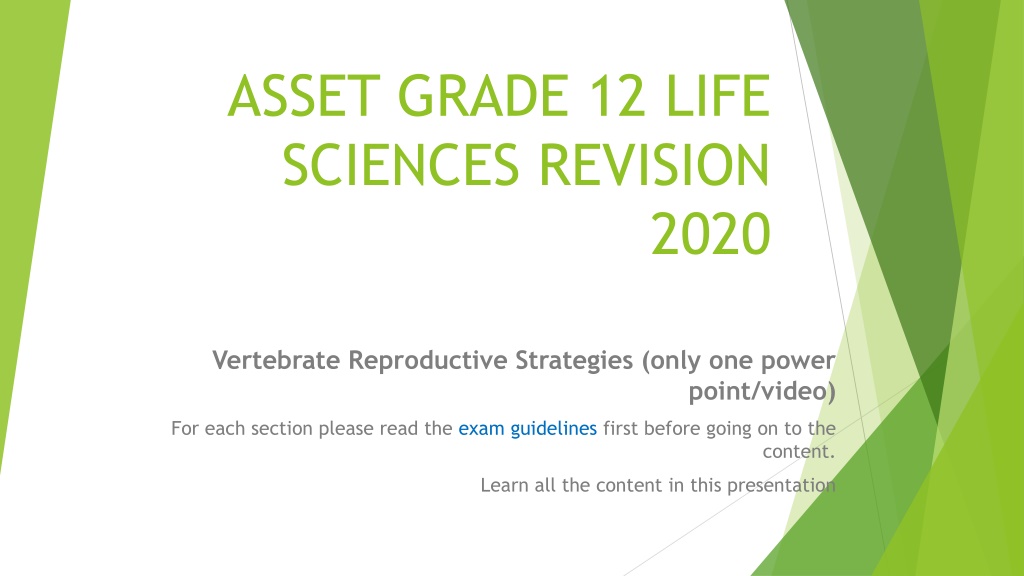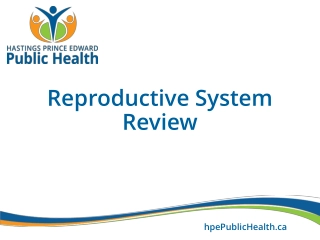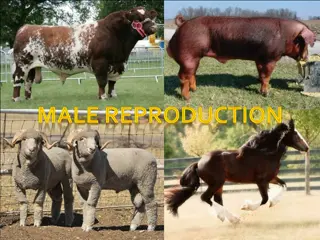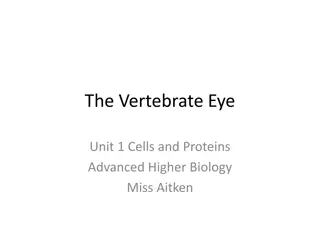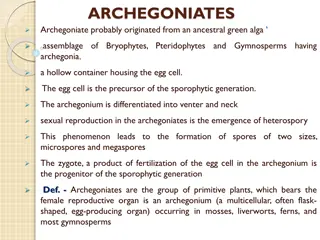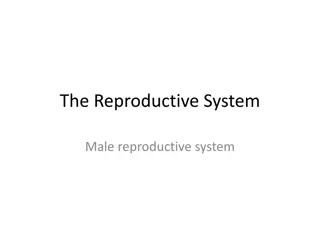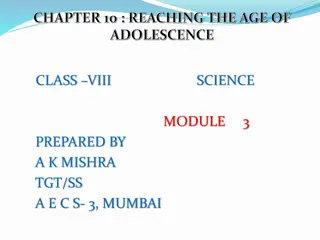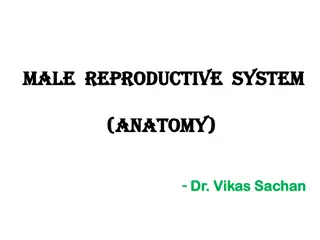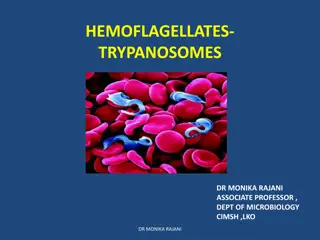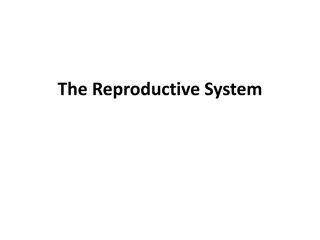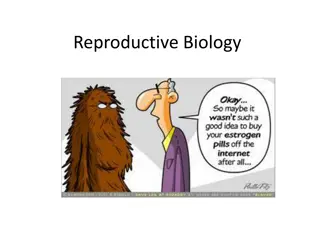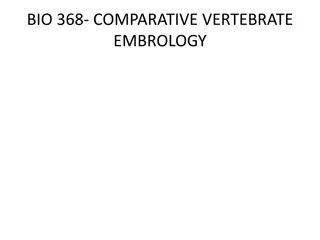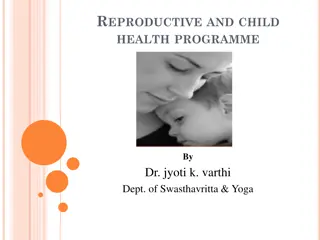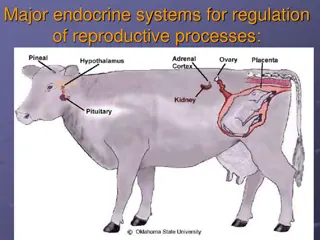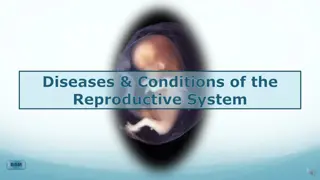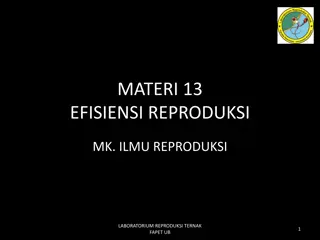Vertebrate Reproductive Strategies and Success Factors
Vertebrates exhibit various reproductive strategies to ensure reproductive success, such as external and internal fertilisation, ovipary, vivipary, and ovovivipary. The ultimate goal of each species is to maximize the number of surviving offspring while conserving energy. Different terminologies related to vertebrate reproduction, parental care, and the advantages and disadvantages of various reproductive strategies are covered in detail.
Download Presentation

Please find below an Image/Link to download the presentation.
The content on the website is provided AS IS for your information and personal use only. It may not be sold, licensed, or shared on other websites without obtaining consent from the author. Download presentation by click this link. If you encounter any issues during the download, it is possible that the publisher has removed the file from their server.
E N D
Presentation Transcript
ASSET GRADE 12 LIFE SCIENCES REVISION 2020 Vertebrate Reproductive Strategies (only one power point/video) For each section please read the exam guidelines first before going on to the content. Learn all the content in this presentation
Terminology to learn, can you differentiate between the linked terms? Vertebrates are animals with a spinal cord and a spine/vertebral column eg fish, amphibia, reptiles, birds and mammals (including humans) Reproductive success is measured by how many of the offspring survive to adulthood and reproduce and produce fertile offspring Reproductive strategy is the mechanism for ensuring reproductive success Fertilisation is when the nucleus of the egg fuses with the nucleus of a sperm External fertilisation takes place outside the female s body and internal fertilisation takes place inside the female s body Ovipary eggs are released and develop outside body of female, fertilisation internal or external, egg yolk only nutrition, young hatches from the egg when developed. Vivipary fertilisation internal, no eggshell, nutrition via placenta, develops inside mother, born alive Ovovivipary Internal fertilisation, eggshell soft, eggs hatch inside body, appears to be born alive, egg yolk for nutrition, mother for protection. Precocial and altricial development of young after birth/hatching. See slide 7 Parental care - Any pattern of behaviour in which parent spends time or energy to improve the survival, condition and future reproductive success of offspring. Advantage = benefit and disadvantage = drawback/detriment (of a strategy)
What is the ultimate goal of each species? To produce the maximum number of surviving offspring ... while using the least amount of energy. So that the species survives ie does not become extinct Lorraine Kuun, July 2011
External and internal fertilisation Disadvantages of external fertilisation (outside the body): Wasteful; huge loss of energy many eggs produced, few survive. 1. Fertilisation not certain. 2. Environmental conditions important for hatching of eggs 3. Advantages of internal fertilisation 1. Fewer gametes needed so less energy expended 2. Greater chance of male gametes meeting up with female gametes so fertilisation is more certain 3. Embryo protected by egg or mother s body so greater chance of survival
Ovipary, vivipary and ovovivipary OVIPARY how is reproduction maximized? If in fish and amphibia, many eggs released into the water, many sperm needed to ensure fertilisation. Less chance of survival of offspring. If in reptiles and birds, fewer eggs because of internal fertilisation, mother s body and eggshell protects developing embryo. Greater chance of survival of offspring VIVIPARY how is reproduction maximized? Occurs in placental mammals, some sharks and scorpions Fertilisation internal, no shell Placenta responsible for nutrition young born alive 1. fewer eggs necessary 2. More energy is available for nourishment and protection of embryo, as well as parental care OVOVIVIPARY how is reproduction maximised? 1. Fewer eggs needed higher survival rate of offspring. 2. Developing embryo much less vulnerable to predators. 3. Developing embryo not subject to environmental changes e.g. temperature. 4. Young born fully developed, can feed and escape predators more easily. 5. Occurs in some invertebrates, fish and reptiles.
Precocial vs. Altricial development PRECOCIAL Young hatch or born when almost fully developed Open eyes, hair or down Active or mobile Not confined to nests Energy goes into prenatal development Offspring have a good chance of survival as they can defend and feed themselves and stay warm ALTRICIAL Born or hatched when not well-developed Often naked, lacking hair or down Cannot walk or fly Confined to nest or burrow Energy goes into parental care after birth. Parents need to feed and defend their offspring and keep them warm. 1. 2. 3. 4. 5. 6. 1. 2. 3. 4. 5. Lorraine Kuun, July 2011
Parental care Care can be given at any stage: Prenatal guarding eggs, building nests, carrying broods, incubating eggs & placental nourishing. 1. Post-natal providing food, protecting offspring, teaching offspring. 2. Little or no parental care: Reproductive energy put into producing masses of eggs. High mortality rate amongst eggs as well as young. Few individuals survive to reproductive age. E.g. Most fish, amphibians, insects, most reptiles A lot of parental care: Few eggs or young produced. Low mortality rate amongst eggs or young. Reproductive energy goes into parental care after birth (post-natal). Most offspring survive to reproductive age. E.g. Mammals, birds, some reptiles, exceptions amongst fish and Arthropods.
